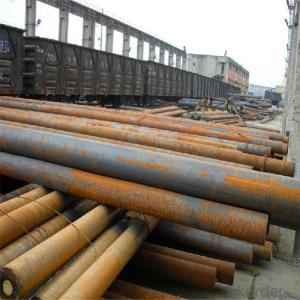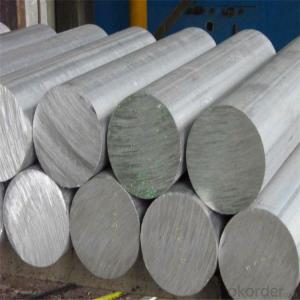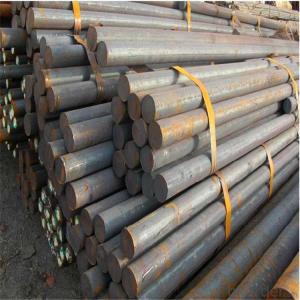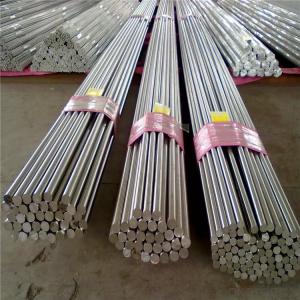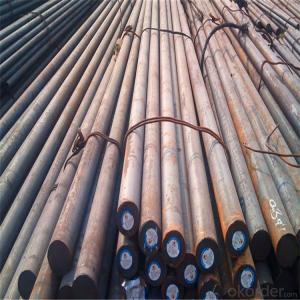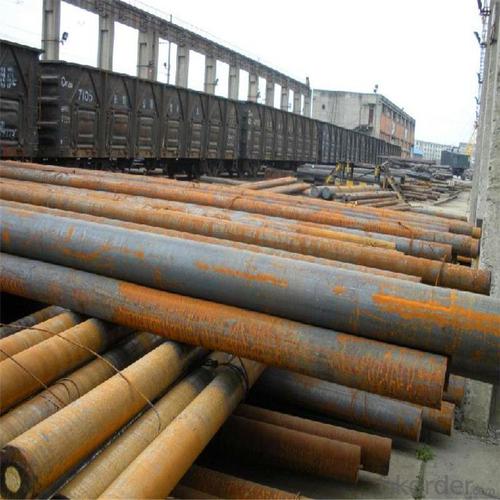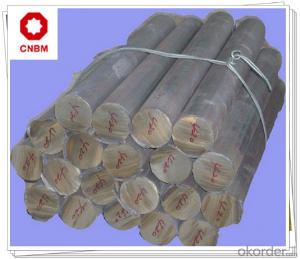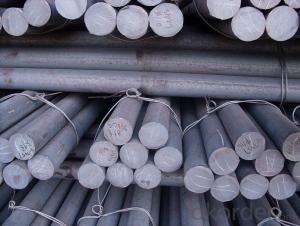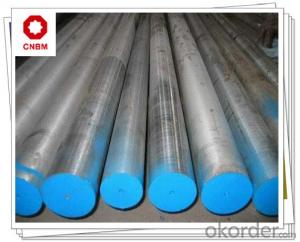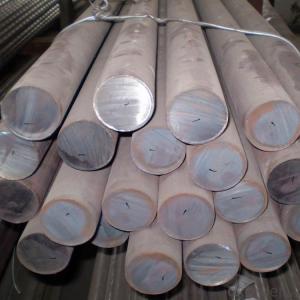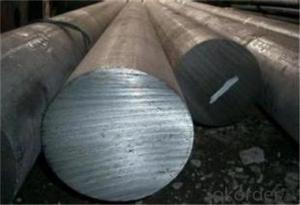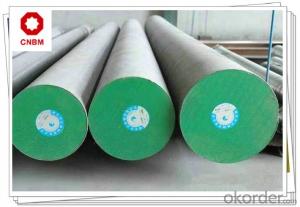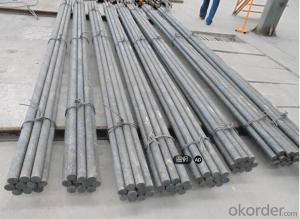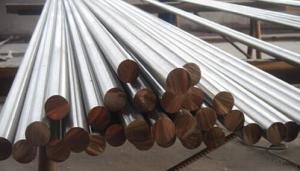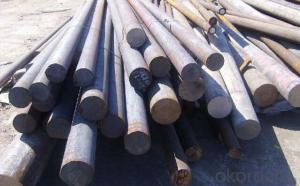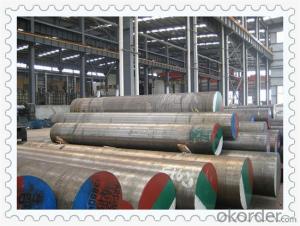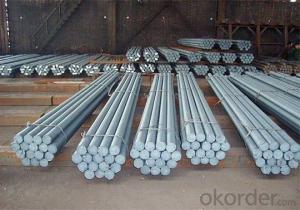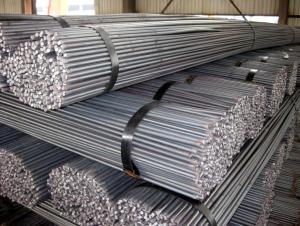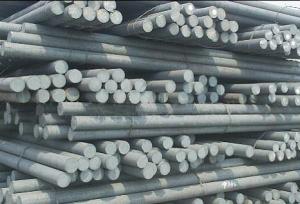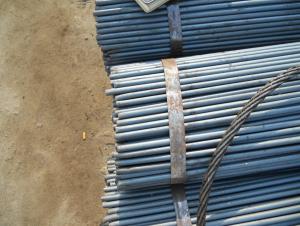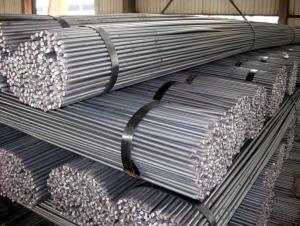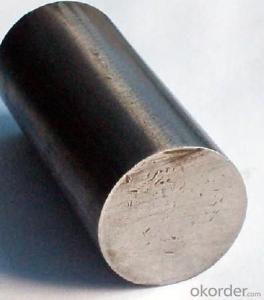High Quality Carbon Structural Steel Round Bar CK45
- Loading Port:
- Tianjin
- Payment Terms:
- TT OR LC
- Min Order Qty:
- 100 m.t.
- Supply Capability:
- 50000 m.t./month
OKorder Service Pledge
OKorder Financial Service
You Might Also Like
Specification
High Quality Carbon Structural Steel Round Bar CK45
Product Description of High Quality Carbon Structural Steel Round Bar CK45
1. Steel grade: SAE1045, 45#, C45, S45C,CK45
2. Length: 6M-12M
3. Diameter: 16mm-300mm
4. Product range: round bar, flat bar, square bar
5. Technique: Hot rolled, forged, cold drawn
Specification of High Quality Carbon Structural Steel Round Bar CK45
Material | CK45 | Round bar | Dia(mm) | 16-300mm |
Process | EAF + LF + VD + Forged + Heat Treatment (optional) | Length (mm) | Max 12m | |
Heat treatment | Normalized / Annealed / Quenched / tempered | Flat bar | Thickness(mm) | 8-500mm |
Delivery condition | Hot forged +Rough machined (black surface after Q/T)+ Turned (optional) | Width(mm) | 70-200mm | |
Test | Ultrasonic test according to SEP 1921-84 D/d | Length (mm) | Max 12m |
Chemical Composition of High Quality Carbon Structural Steel Round Bar CK45
C | Si | Mn | Cr | Ni | Cu |
0.42~0.47 | 0.17~0.37 | 0.35~0.65 | ≤0.25 | ≤0.30 | ≤0.25 |
Photo Show of High Quality Carbon Structural Steel Round Bar CK45
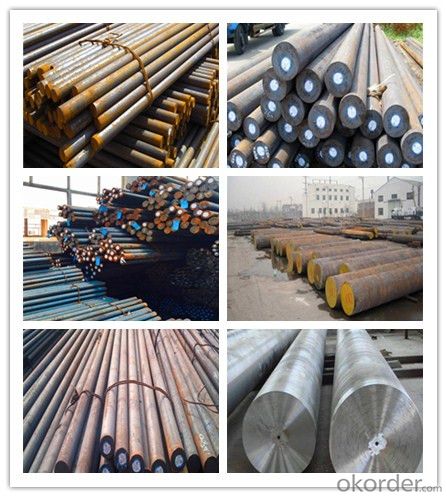
Packing and Delivery:
Packing in bundle package, or as customer's requirements.
Delivery Detail: 45 days after receiving the deposit.
Usage and Applications of High Quality Carbon Structural Steel Round Bar CK45
1. Steel round bar is used in a large number of architectural and engineering structures. Or it can be used in construction of plants for the production of steel house frames, high-voltage transmission towers, bridges, vehicles, boilers, containers, ships, etc.
2. And we can use this kind of product on the performance of the mechanical parts if the demand is not very high.
3. Some special material steel round bar can be used for main shaft of steamer, hummer shank, with big section and supper force.
Company Information
CNBM International Corporation is the most important trading platform of CNBM group.
Whith its advantages, CNBM International are mainly concentrate on Cement, Glass, Iron and Steel, Ceramics industries and devotes herself for supplying high qulity series of refractories as well as technical consultancies and logistics solutions.

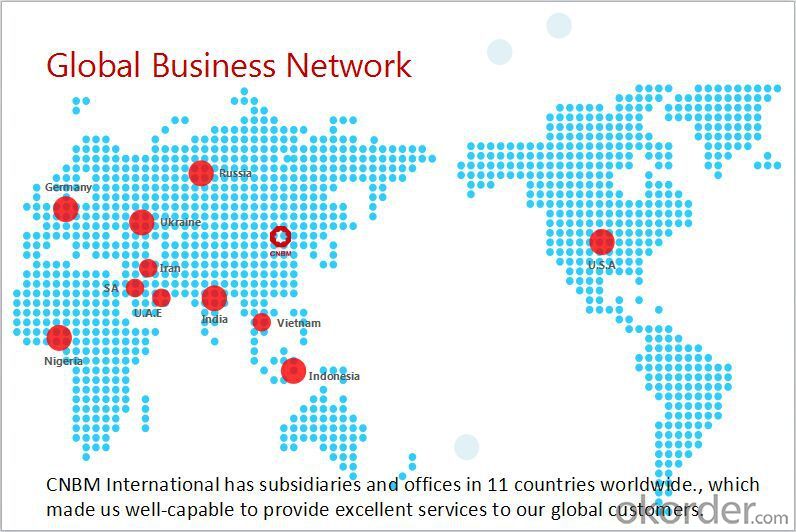
F A Q
1, Your advantages?
professional products inquiry, products knowledge train (for agents), smooth goods delivery, excellent customer solution proposale
2, Test & Certificate?
SGS test is available, customer inspection before shipping is welcome, third party inspection is no problem
3, Factory or Trading Company?
CNBM is a trading company but we have so many protocol factories and CNBM works as a trading department of these factories. Also CNBM is the holding company of many factories.
4, Payment Terms?
30% TT as deposit and 70% before delivery.
Irrevocable L/C at sight.
5, Trading Terms?
EXW, FOB, CIF, FFR, CNF
6, After-sale Service?
CNBM provides the services and support you need for every step of our cooperation. We're the business partner you can trust.
For any problem, please kindly contact us at any your convenient time.
We'll reply you in our first priority within 24 hours.
- Q: What are the advantages of using high-speed steel round bars?
- Using HSS round bars in various applications offers several advantages. Firstly, their exceptional hardness and wear resistance make them perfect for high-speed and high-temperature cutting, shaping, and machining operations. HSS round bars can withstand the heat generated in these processes without losing hardness or dulling quickly. This results in improved tool life and reduced downtime for tool changes. Secondly, HSS round bars possess excellent strength and toughness properties, enabling them to handle heavy loads and resist deformation, even in demanding applications. Their strength and toughness make them suitable for industries like aerospace, automotive, and manufacturing, where precision and reliability are crucial. Thirdly, HSS round bars provide superior cutting performance. Due to their high hardness, they retain a sharp cutting edge for a long time. This ensures efficient and precise cutting, minimizing inaccuracies or errors in the workpiece. The sharp cutting edge also contributes to improved surface finish and dimensional accuracy. Additionally, HSS round bars have good thermal conductivity, meaning they efficiently dissipate heat generated during cutting or machining operations. This prevents overheating, which can cause premature tool failure or damage. The ability to manage heat buildup helps maintain the integrity of the tool and extends its lifespan. Lastly, HSS round bars are readily available and cost-effective compared to other high-performance tool materials like carbide. This makes them a popular choice, especially in industries where cost considerations are significant. In conclusion, the advantages of using HSS round bars include exceptional hardness and wear resistance, excellent strength and toughness, superior cutting performance, good thermal conductivity, and cost-effectiveness. These advantages make HSS round bars the preferred choice for professionals and industries that require reliable and efficient cutting and machining tools.
- Q: Can steel round bars be used for decorative purposes?
- Yes, steel round bars can be used for decorative purposes. They can be shaped, polished, and designed in various patterns to enhance the aesthetic appeal of architectural elements, furniture, sculptures, and other decorative objects. The versatility and durability of steel make it a popular choice for both functional and decorative applications.
- Q: Can steel round bars be used for shafts or axles?
- Yes, steel round bars can be used for shafts or axles. Steel round bars are commonly used in various industries, including automotive, machinery, and construction, for their strength, durability, and versatility. They are often chosen for shafts or axles due to their ability to withstand heavy loads, provide reliable support, and resist wear and tear. Steel round bars can be machined and heat-treated to meet specific requirements, making them suitable for use as shafts or axles in various applications where strength and reliability are crucial, such as in vehicles, industrial equipment, and rotating machinery.
- Q: Are steel round bars used in the aerospace industry?
- Yes, steel round bars are commonly used in the aerospace industry for various applications such as structural components, landing gears, and engine parts. The high strength, durability, and excellent mechanical properties of steel make it an ideal material choice for aircraft manufacturing.
- Q: What are the different types of steel round bars used in the automotive exhaust systems?
- There are several different types of steel round bars used in automotive exhaust systems, each with its own unique properties and applications. Here are some of the most common types: 1. Stainless Steel Round Bars: Stainless steel is a popular choice for exhaust systems due to its excellent corrosion resistance and high temperature resistance. It is commonly used in both the primary and secondary components of the exhaust system, such as headers, catalytic converters, and mufflers. 2. Carbon Steel Round Bars: Carbon steel is another commonly used material in exhaust systems. It provides good strength and durability, making it suitable for various components like exhaust pipes and hangers. However, carbon steel is more prone to corrosion compared to stainless steel, so proper coating or treatment is necessary to prevent rusting. 3. Aluminized Steel Round Bars: Aluminized steel is carbon steel that has been coated with an aluminum-silicon alloy. This coating provides excellent corrosion resistance and heat reflectivity, making it an ideal choice for exhaust systems. Aluminized steel is often used in exhaust pipes and mufflers, as it helps to reduce heat buildup and improve overall durability. 4. Titanium Round Bars: Although less commonly used due to its high cost, titanium is an extremely lightweight and durable material that offers exceptional corrosion resistance. In high-performance or specialty exhaust systems, titanium round bars may be used to reduce weight and enhance overall performance. It is often found in exhaust tips and high-end aftermarket exhaust systems. Overall, the choice of steel round bars for automotive exhaust systems depends on factors such as cost, performance requirements, and specific application needs. Manufacturers carefully select the appropriate type of steel to ensure longevity, efficiency, and compliance with emissions regulations.
- Q: Can steel round bars be used for making shock absorber components?
- Yes, steel round bars can be used for making shock absorber components. Steel is a common material choice for shock absorber components due to its strength, durability, and ability to withstand high levels of stress and impact. The round shape of the bars also allows for easy machining and fabrication of the necessary components.
- Q: Can steel round bars be used for making shock absorber components?
- Absolutely! When it comes to constructing shock absorber components, steel round bars are a fantastic choice. The reason being, steel possesses exceptional qualities including robustness, longevity, and the ability to withstand wear and tear. By utilizing steel round bars, it becomes possible to craft a multitude of shock absorber elements, including piston rods, mounting brackets, and tube bodies, through either machining or forging methods. The incorporation of steel guarantees that these components can endure the immense pressures and forces linked to shock absorption, thereby ensuring vehicle stability and seamless functionality.
- Q: How are steel round bars measured?
- The measurement of steel round bars is typically based on their diameter. The diameter is determined by measuring the distance across the widest part of the bar, usually in millimeters or inches. It should be emphasized that the diameter measurement is taken at the round bar's greatest cross-section, which is the distance across its center point. This measurement plays a crucial role in different applications as it assists in determining the strength, stability, and load-bearing capacity of the steel round bar.
- Q: What are the different types of steel used for round bars?
- There are several different types of steel used for round bars, including carbon steel, alloy steel, stainless steel, and tool steel. Each type has its own unique composition and properties, making them suitable for various applications and industries.
- Q: Can steel round bars be used in the construction equipment industry?
- Yes, steel round bars are commonly used in the construction equipment industry. Steel round bars are known for their strength, durability, and versatility, making them suitable for various applications in construction equipment. They can be used to manufacture components such as axles, shafts, pins, and fasteners. The high strength of steel round bars ensures that the construction equipment can withstand heavy loads and harsh working conditions. Additionally, steel round bars can be easily machined and welded, allowing manufacturers to create complex and customized designs for construction equipment. Overall, steel round bars are widely utilized in the construction equipment industry due to their exceptional mechanical properties and ability to enhance the performance and longevity of the equipment.
Send your message to us
High Quality Carbon Structural Steel Round Bar CK45
- Loading Port:
- Tianjin
- Payment Terms:
- TT OR LC
- Min Order Qty:
- 100 m.t.
- Supply Capability:
- 50000 m.t./month
OKorder Service Pledge
OKorder Financial Service
Similar products
Hot products
Hot Searches
Related keywords
